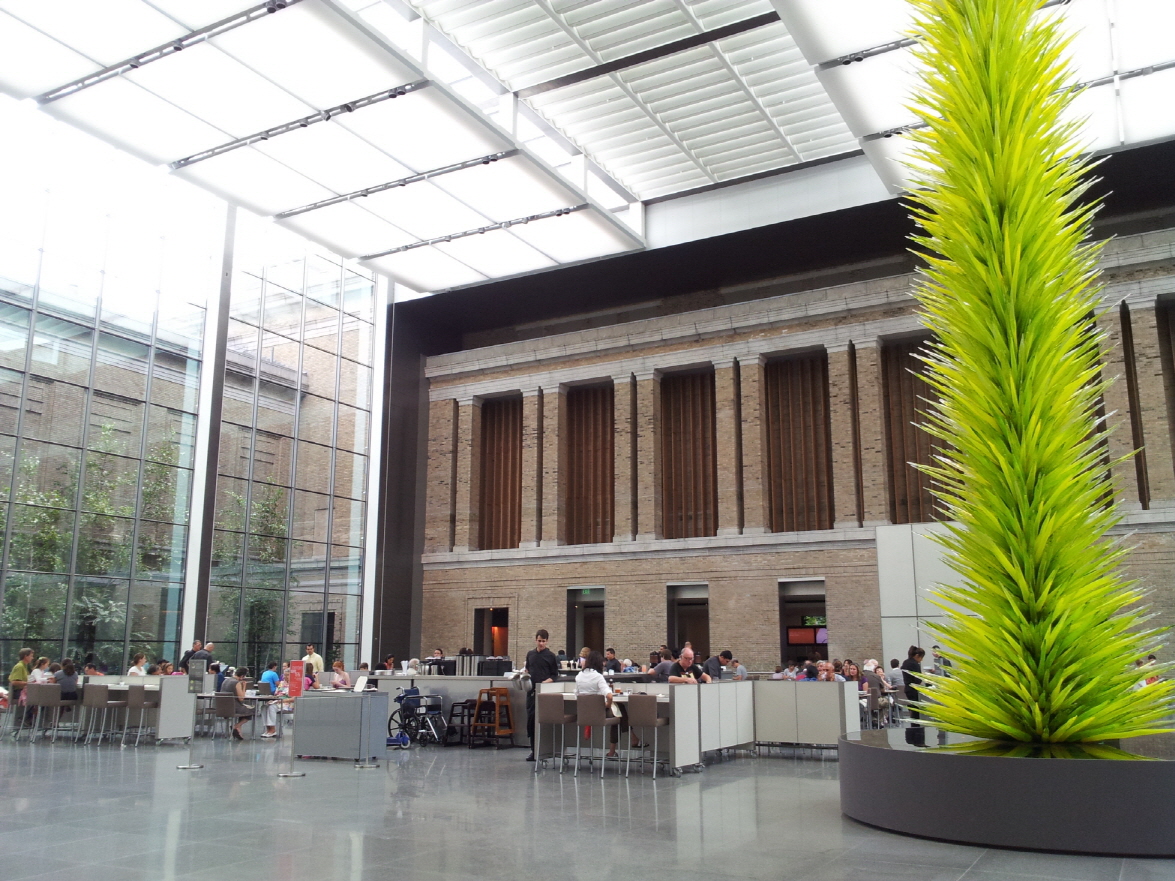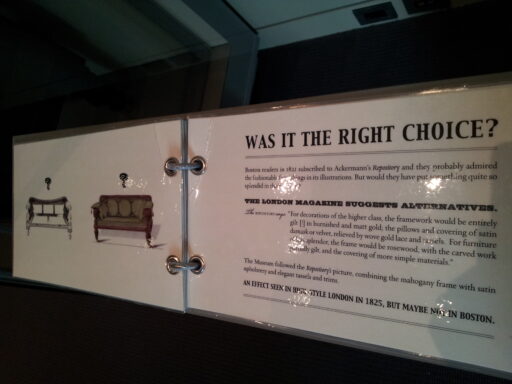While I stayed in Boston for the conference, I visited Museum of Fine Arts (MFA), Boston and met an intriguing decision-making question. I took a picture of a panel titled Making Choices which says,
Every gallery represents a long series of choices. Who decides which works go on view and how they should be arranged? What factors go into making that decision? Does the Museum have consistent guidelines about what should be on view — or do the rules change from gallery to gallery?
Ultimately, the MFA’s curators are responsible for deciding what you see in the galleries, for making choices from the Museum’s rich collections that do justice to the art and engage the viewer. Context is key — what is the story to be told? Should the gallery be a survey of a whole period or should it showcase just a few artists in depth? Should it provide variety or set up close comparisons? Re-create a sense of a historical period, focus on a specific style, or feature that character of individual objects? Curators work with a team of designers and educators in considering these issues and making these decisions.
And finally there is the question of quality. Which works are the most compelling? In which are the artist’s skills most effectively employed? Where are materials used with the greatest sophistication or technical ability? And what about condition: does the work still represent the artist’s intent at the time it was made?
Indeed, curators face a decision-making task regarding how to display an artifact. Do they complete the artifact to restore its original appearance (e.g., sofa with hypothetical cushions) or do they remain the artifact as-is for further studies (e.g., sofa frame only)? Unfortunately, there is no right answer for this question. I wish some behavioral decision theory researchers discuss this issue seriously.
***
Reference
Einhorn, H. J., & Hogarth, R. M. (1981). Behavioral decision theory: Processes of judgement and choice. Annual review of psychology, 32(1), 53-88.



While visiting the Museum of Fine Arts, Boston, the author read an article titled “Making Choices”. “Every gallery is a series of choices. The curator of the gallery has to decide what to let the audience see and how to engage them. Whether the gallery will survey a whole period or just a few artists in depth, whether to restore artifacts or not, and so on.”
These decisions curators face are all trade-offs. It’s difficult to show a wide range of artists if you want to show a wide range of artists, and it’s difficult to show a wide range of artists if you want to show a wide range of artists, because galleries have limited space and money.
In product planning, it is also very difficult and important to make decisions about trade-offs. From the source of ideas for new product development to the specification of the product, you have to make decisions constantly. For example, a designer of a new smartphone has to make unanswerable trade-offs between making it stronger, which makes it heavier, and making it lighter, which reduces its durability.
These trade-offs are not only in product planning, but also in event planning. I once worked on a project to propose a communication strategy for a festival organized by an entertainment agency called ESteem. The name of the festival was ‘C.AT WORK FESTA’.
Since C.AT WORK FESTA is about lowering the barrier of entry to traditional fashion shows, popularity is essential. However, if it becomes too popular, it is likely that trend leaders will not come, i.e., people who are resistant to what is already popularized. Therefore, there was a conflict between whether C.AT WORK FESTA should target trend leaders or the general public.
However, I thought outside the box. I realized that the current generation of young people enjoy cultural life in a variety of ways and produce a variety of digital content, and that they have the temperament of creators who want to build their own world through the inspiration they get from cultural life and put it out into the world. Therefore, I proposed to communicate C.AT WORK FESTA as a place for inspiration and expression, so that both trend leaders and the general public can relate to it.
Karen Gard, Managing Director of Oxford Creativity, said. “The idea that you must make trade-offs stifles creativity”. I, too, have been able to come up with creative communication strategies by thinking outside the box. Trade-offs are almost inevitable, but sometimes it’s worth asking if there’s a way to solve both at the same time.
(https://english.visitseoul.net/events/Cat-Work-Festa/ENPpclfxn)